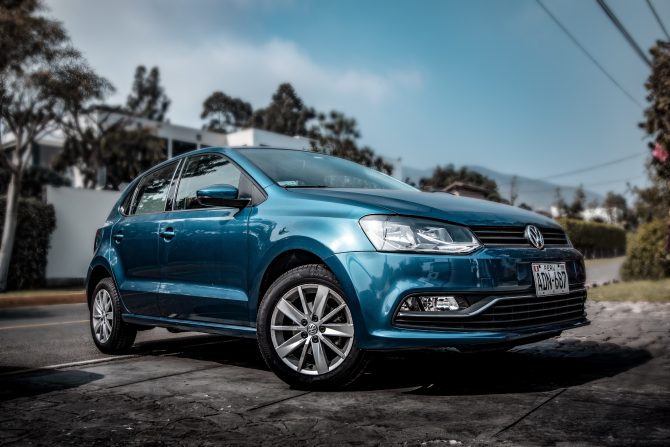Leasing a New Car in France: How Does the LLD/LOA Work?
Essential Reading


If you’re thinking of purchasing a new car in France, an increasingly popular alternative is to lease a car under an LLD (Location Longue Durée) or LOA (Location Avec Option d’Achat) contract. With attractive monthly fees, reduced maintenance costs, and the opportunity to drive a brand-new model at a fraction of the purchase price, more and more French drivers are choosing one of these schemes. Here’s what you need to know.
Leasing a car in France: the basics
Just like in other countries, car leasing schemes have become increasingly popular in France in recent years. While these schemes aren’t for everyone and may not always be as affordable as they first appear, they do have some advantages and are certainly worth considering as an alternative to purchasing a new car.
There are two main options available for drivers:
- LLD (Location Longue Durée) or long-duration lease is a leasing agreement that allows you to drive the car for a pre-determined amount of time (typically three years) for a monthly fee. At the end of the contract, you return the car and/or renegotiate your contract to lease a different car. There is no option to buy the car.
- LOA (Location Avec Option d’Achat) or lease with the option to buy works in a similar way; however, at the end of the contract, you have the option to either return the car and end the contract, or to purchase the car at the price pre-determined in your original contract
Why choose an LLD or LOA contract?
An LLD or LOA contract is typically seen as an alternative to purchasing a new car and works on the principle that new cars dramatically lose their value during the first three years after purchase. For a buyer who routinely purchases a brand-new car, then sells it on after three-five years in order to purchase the latest model, you can expect the car to lose some 35%-50% of its original value. So, why not do away with the hassle of buying, selling, and maintaining your vehicles and instead spend that 35% on leasing a car instead?
If you don’t have the capital to buy the car you want, leasing a car might also be a long-term alternative to taking out a car loan – although you are unlikely to save money in the long run, you will have more flexibility, allowing you to reduce your monthly payments and also opt-out of the final purchase if your situation changes.
Finally, leasing a car could be a smart choice for business owners who will be able to make the most of lower ‘professional’ leasing rates and potential tax benefits.
Advantages of an LLD or LOA
- You get to drive a brand-new car and benefit from the latest technologies and trends – potentially giving you the opportunity to drive a car that you couldn’t afford to purchase outright.
- You get to ‘test-drive’ said car for a few years before deciding whether or not the car is for you.
- You avoid the hassle and cost of routine car maintenance and pricey repairs – partly as you are driving a new car and also because most contracts include an ‘entretien’ (maintenance) package.
- There is typically quite a bit of flexibility with an LLD contract, allowing you to negotiate a monthly fee that suits you – because of this, monthly payments will likely be lower than that of a standard car loan.
- With an LLD, there is no hassle of re-selling the vehicle at the end of the lease.
- For business owners or auto-entrepreneurs, leasing the car under a business contract could mean lower monthly payments that are potentially tax deductible.
Disadvantages of an LLD or LOA
- With an LOA, you will pay more for the car overall if you decide to buy it – if you’re certain that you want to own the car in question, taking out a car loan is probably a more cost-efficient option.
- Not everything is included in the maintenance package – new tyres, for example, are normally still at the driver’s expense. Be sure to check the small print carefully so you understand exactly what is and isn’t covered.
- You will still need to pay to insure your car.
- You do not own the car during the lease contract.
- You must stay under the pre-determined threshold of kilometres/year – for high-mileage drivers; this might not be the best option.
- You are expected to return the car in a suitable condition – while a reasonable amount of use and wear will be expected, this is something to carefully consider if you have young children, pets, or use your car for off-roading or work activities.
Understanding the LLD/LOA contract
At first glance, some of the LLD/LOA deals can seem very attractive, but as with most things, the advertised prices and offers are often not quite as good as they seem! It’s highly recommended to compare multiple LLD/LOA offers and to speak with an advisor who can work out an offer or multiple offers to suit your individual circumstances.
Just as with any loan or rental contract, there are various factors to consider when choosing the right deal for your circumstances and the best deal financially.
The most important things to consider are:
- The amount of the “apport” – the downpayment or lump sum. Some contracts will be ‘sans apport’, meaning that there is no lump sum payment required; other contracts call this the “1er loyer” (i.e. the first rental fee). All contracts should be available ‘sans apport’, and this is often the best deal; however, paying an apport upfront means you can lower the monthly fees.
Note that this is not a deposit – you don’t get it back at the end of the contract, and if you wish to take out another contract at the end of the lease, you will need to repay the apport.
The higher the apport, the lower the monthly fees – however, there is often a sweet spot, above which you will end up paying substantially more overall. So, it’s important to also look at…
- The total cost. How much will you pay for the car over the entire contract? You can calculate this using the following equation:
apport x (monthly fee x duration of the contract in months)
For example: a contract with an apport or 1er loyer of €4,500 and a monthly fee of €430 over three years would cost €4,500 + (€430 x 36) or €19,980.
- The Prix d’Achat or purchase price. For an LOA, you would also want to know the final purchase price if you wish to buy. You would then add this to the total cost of the lease to find out the entire cost of the car. For example, if the above contract was offered with a final purchase price of €14,700, you would add this to the total lease cost of €19,980 – the total cost of the car, if you decided to purchase it, would then be €34,680. (You can then compare this with the retail price of the car in question to work out how much extra you would pay in financing overall).
- The duration of the lease. Often when you see very low monthly fees advertised, it is a figure based on a very long lease – such as 72 months (six years!). In general, you don’t want to be going over three years or 36 months, and most contracts are between 24 and 36 months, so keep this in mind.
- The monthly payment amounts. This is probably the first thing that most people will look at, but we’ve put it last for a reason! As you can see from the above, the amount that you decide to pay monthly will be determined by the amount of the apport and the duration of the lease, so it’s crucial to take all three into account.
The bottom line is that if your desired monthly fee means that you have to put down a larger-than-average apport and commit to a six-year contract, it might be better to choose a lower-value car that better fits your budget. Note that a good sales advisor should point this out – while they might understandably want to nudge you towards the pricier options, most reputable garages have no interest in tying you into a contract that is obviously a terrible deal!
LOA/LLD in France: Top Tips and Common Pitfalls
As with every contract, make sure that you know exactly what you are getting into before you sign. Along with the above-mentioned points, be sure that you fully understand the following:
- Contrat d’entretien: Most LLD or LOA contracts include a maintenance package or ‘contrat d’entretien’. Sometimes this is inclus or offert (included/free), but other times it is a separate package available at an added cost. Be sure to confirm exactly what this includes and how much it will cost you over the entire duration of the lease. Focus, in particular, on anything that is not included – the driver is still typically liable for covering any scratches/dents using their insurance (remember, taking out car insurance will still be your responsibility) and replacing tyres. As a general rule of thumb, a good contract should include a basic entretien package (or offer it for a very low fee), but pricier or additional packages probably aren’t worth taking out.
- Kilometrage: All LLD/LOA contracts will have an annual mileage/kilometrage, and the cost for going over these can be steep, so be sure that you know how much many kilometres you average over a year and choose a contract accordingly. It’s worth asking exactly what the penalties and thresholds are if you go over too – a few kilometres over is unlikely to make a big difference, but if your contract is based on 10,000km/year usage and you return the car after three years with 60,000km on the clock, you might have a problem!
Other things to consider:
- Special rates and potential tax advantages are available to business owners/auto-entrepreneurs, so be sure to mention this to your adviser to find out more about this option.
- LOA/LLD contracts are also available on second-hand purchases, and renting a 2- or 3-year-old vehicle could bring down the costs substantially, so this is definitely something to consider.
- If you are upgrading an old petrol or diesel car for an electric or hybrid car, you may be eligible for the ‘Prime a la conversion’ and ‘Bonus Ecologique’ government grants. These are also applicable to an LOA/LLD contract, and some garages may agree to deduct these from your apport (in fact, some of the very low advertised prices on LLD contracts are actually based on receiving these grants, which aren’t available to everyone – another reason to take the advertised prices with a pinch of salt!)
- Car insurance tariffs on a leased vehicle may be higher, so get a quote from your insurer prior to signing.
Driving in France
Whether you own a car in France, travel to France in your UK or EU-registered car, or hire a rental car – FrenchEntrée has all the need-to-know info about driving in France. Our Essential Reading articles will take you through buying, registering, and insuring your car, as well as offering tips and advice on driving and car ownership in France.
Share to: Facebook Twitter LinkedIn Email
By FrenchEntrée
Leave a reply
Your email address will not be published. Required fields are marked *




REPLY
REPLY
REPLY
REPLY